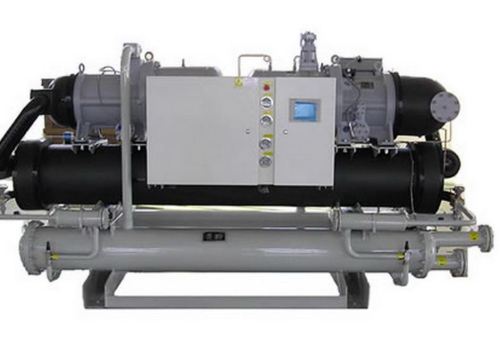 The Heat Pump is a device that transfers heat energy from a low heat source to a high heat source, and it is also a new energy technology attracting worldwide attention. It is different from the mechanical equipment that people are familiar with that can increase the potential energy—the “pumpâ€. The heat pump usually obtains low-grade thermal energy from the air, water or soil in nature, and then works through electricity, and then provides it to people. High grade heat energy.
The Heat Pump is a device that transfers heat energy from a low heat source to a high heat source, and it is also a new energy technology attracting worldwide attention. It is different from the mechanical equipment that people are familiar with that can increase the potential energy—the “pumpâ€. The heat pump usually obtains low-grade thermal energy from the air, water or soil in nature, and then works through electricity, and then provides it to people. High grade heat energy. Works <br> <br> water flows from the lower height, the high temperature heat transfer to the cold object was full, it is natural. However, in real life, people use water pumps to send water from a low place to a high place for the needs of agricultural irrigation, domestic water, and the like. Similarly, in today’s increasingly tense energy environment, heat pumps are used to transfer heat energy from low-temperature objects to high-temperature objects in order to recover low-temperature hot gases, which are usually discharged into the atmosphere, and low-temperature hot water discharged into rivers. Objects heat water or heat to make full use of heat.
The working principle of the heat pump system is consistent with the working principle of the refrigeration system. To understand the working principle of the heat pump, we must first understand the working principle of the refrigeration system. The refrigeration system (compression refrigeration) is generally composed of four parts: a compressor, a condenser, a throttle valve, and an evaporator. Its working process is: a low-temperature, low-pressure liquid refrigerant (eg, Freon), which first absorbs heat from a low-temperature heat source (for example, chilled water) and vaporizes into a low-pressure vapor in an evaporator. The refrigerant gas is then compressed in the compressor into high temperature, high pressure vapor which is cooled in the condenser by a low temperature heat source (eg, cooling water) to condense into a high pressure liquid. After throttling components (capillary, thermal expansion valve, electronic expansion valve, etc.) throttling into a low temperature and low pressure liquid refrigerant. This completes a refrigeration cycle.
Heat pump performance is generally evaluated by the COP (coefficient of performance). The coefficient of cooling is defined as the ratio of heat transferred from a cryogenic object to a high temperature object to the required power. The heat pump usually has a refrigeration coefficient of about 3-4. That is, the heat pump can transfer 3 to 4 times the heat energy of its own heat from a low temperature object to a high temperature object. Therefore, a heat pump is essentially a kind of heat-raising device. When it is working, it consumes a small part of its own electric energy. However, it can extract 4-7 times of the electric energy from environmental media (water, air, soil, etc.) to increase the temperature and use it. This is also the reason for heat pump energy saving. Europe, the United States and Japan are competing to develop new heat pumps. It is reported that the new type of heat pump can have a refrigeration coefficient of 6 to 8. If this value can be popularized, it means that energy will be used more effectively. The popularity of heat pumps will also be dramatically increased.
A ground source heat pump is a kind of heat pump. It uses the earth or water as the cold and heat source to cool the buildings in winter and cool in summer. The ground source heat pump only transfers energy between the earth and the interior. Use minimal power to maintain the desired temperature in the room. In the winter, 1 kilowatt of electricity will send 4-5 kilowatts of heat from the soil or water source into the room. In the summer, the process is reversed. The heat in the room is transferred to the soil or water by the heat pump, so that the room gets cool air. The energy gained from the underground will be used in winter. In this way, the building space and nature are united. Get the most comfortable living environment at the lowest price.
Haixing Brush Machine Company is able to manufacture many kinds of brush making machines to produce different kinds of brushes, such as paint brushes, toilet brushes, dish wash brushes, toothbrushes, hair brushes, shoe brushes, nail brushes, and so on. Among Haixing hair brush machines, HS40-16F is a typical model. It is designed to produce round hair brushes, and it can finish the tasks of feeding handles, drilling holes and tufting filaments. Automatic trimming can be included too. It can produce brushes with two color filaments. And HPM is a trimming brush machine specially designed to trim the hair brushes.
Hair Brush Machine,Hair Brush Making Machine,Automatic Hair Brush Machine,Hair Brush Cnc Machine
Yangzhou Haixing CNC Brush Machine Co., Ltd. , http://www.hxbrushmachine.com
